#DelosYourself and Stop Shin Splints in Their Tracks
I first learned about shin splints as a high school soccer player. I remember teammates being saddled on the sidelines with the alliterative injury for weeks at a time, painfully hobbling around and grimacing as they iced their shins during oevery practice.
Today, I stay pretty far away from a soccer field, but shin splints have remained a concern in the back of my mind as I took up running as an adult. After all, shin splints are one of the most common injuries among runners, affecting an estimated three million Americans per year, and they’re especially dangerous to new runners.
What are shin splints?
According to Delos Therapy co-owner Eric Owens, shin splints (or, if you’re feeling fancy, medial tibial stress syndrome) are caused by overuse, and he agrees that runners are at high risk for developing them — especially during the high mileage associated with the upcoming marathon training season.
“Any kind of repetitive use causes a ton of wear and tear in the muscle tissue along the tibia,” Owens explains. “[The muscle tissue] can pull and eventually split the tibia if it gets too tight, and that split can cause stress fractures.”
What do shin splints feel like?
Depending on how far along your shin splints are, the pain might present itself a little bit differently. In most cases, says Owens, the pain is right along the shin, but it could also present on the inside or outside of the shin. You might notice the pain on the bone itself or in the muscles.
“In the beginning,” says Owens, “you’ll notice a dull ache as the muscle tissue continues to tighten. The dull ache transforms to sharper pain as it starts really pulling on the tibia, and the pain gets more intense, more sharp, more localized — overall, it’s a higher intensity of tightness.”
And regardless of what stage of pain you’re in, there’s one commonality: the pain typically feels worse with activity.
“Running, jumping — that’s when you’ll notice it the most,” acknowledges Owens.
Take note, archless runners: you might be at greater risk for shin splints if you have flat feet.
“People with flat feet are typically more predisposed to shin tightness because of the angle of the ankle, which causes overpronation with the foot and stress on those muscles,” warns Owens. “More strain on a muscle causes it to get tight. Plus, as you age, your arches fall in your feet, making you even more prone to shin splints.”
How do you treat shin splints?
So, what can you do to ward off shin splints and keep running? The biggest thing, according to Owens, is catching it early, resting, icing, and of course, relieving the tightness by applying pressure to the affected areas.
“The treatment is simple enough: rest and ice. However, research states that it takes 3-6 months to recover from shin splints; by adding in treatment from Delos, you can cut that down to four weeks.”
And don’t take the advice to rest lightly, either: ignoring shin splints and allowing the muscle tissue to tighten even further can cause a stress fracture, sidelining you for an even longer chunk of time. Your best bet is to be proactive about any kind of pain.
“If you’re feeling very proactive, go beyond treating symptoms of pain and think about treatment of performance. Once something hurts, you’ve already lost access to a lot of muscle tissue. Absence of pain doesn’t imply muscular health,” preaches Owens.
Ready to treat your shin splints? Here’s how Delos can help your shin splints, and what you can DIY at home.
Tibialis anterior
What Delos does

Owens uses the power of his thumbs to apply heavy pressure right along your tibia, helping your muscles loosen and relax. If you’re lucky, he may even get the #delbows involved.

What you can do at home
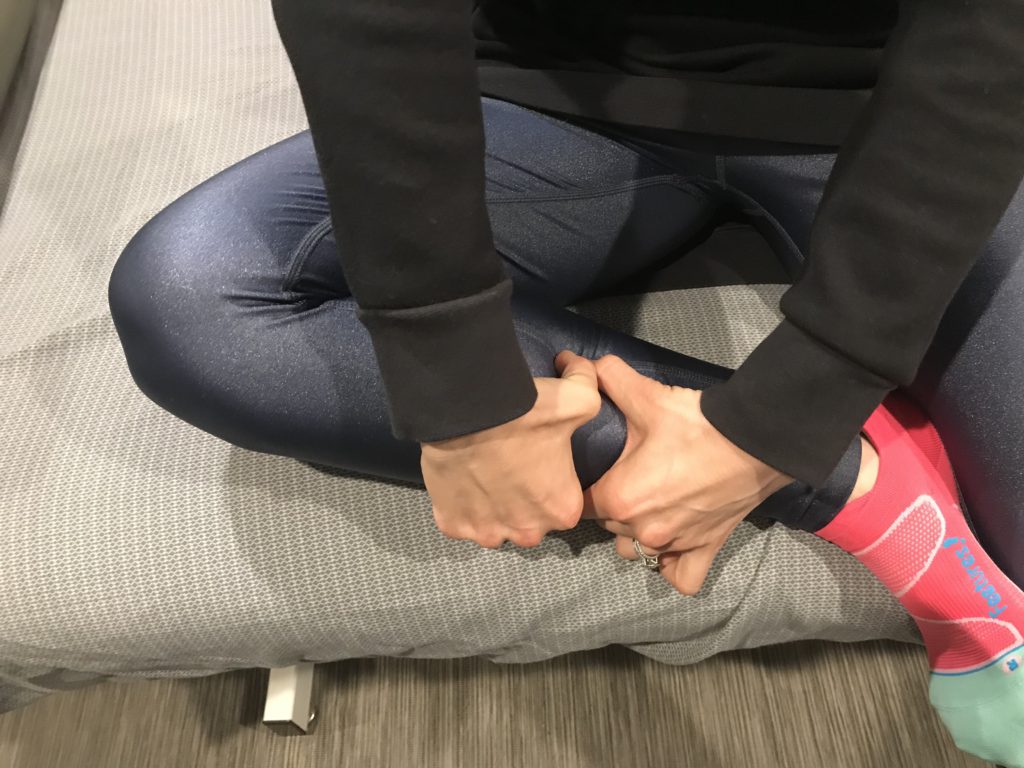
Bend the knee of the shin you’re treating so your foot is near your opposite inner thigh. Place your thumbs close together and apply pressure, taking deep breaths and holding for up to 30 seconds.
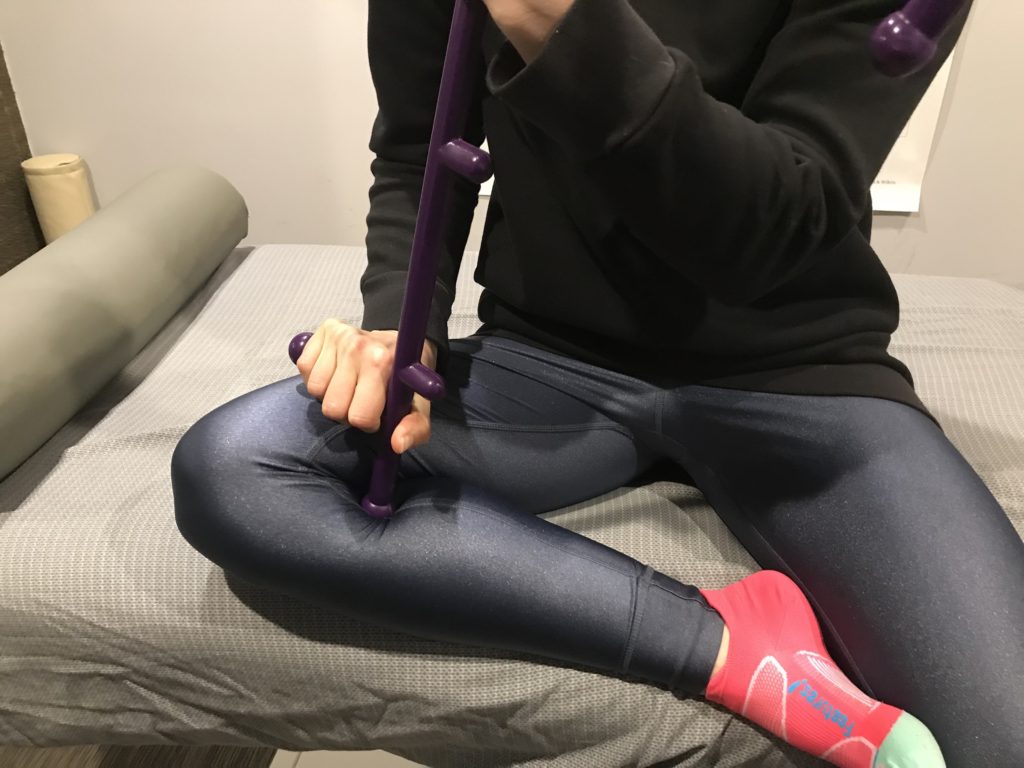
Got a Theracane? You can use one of the knobs to apply even more pressure in a couple different ways, as shown. When you’re working on the medial (the center side), Owens says, “You want the pressure to be right along the tibia, so your arm provides pressure and you’re more secure in small movements.
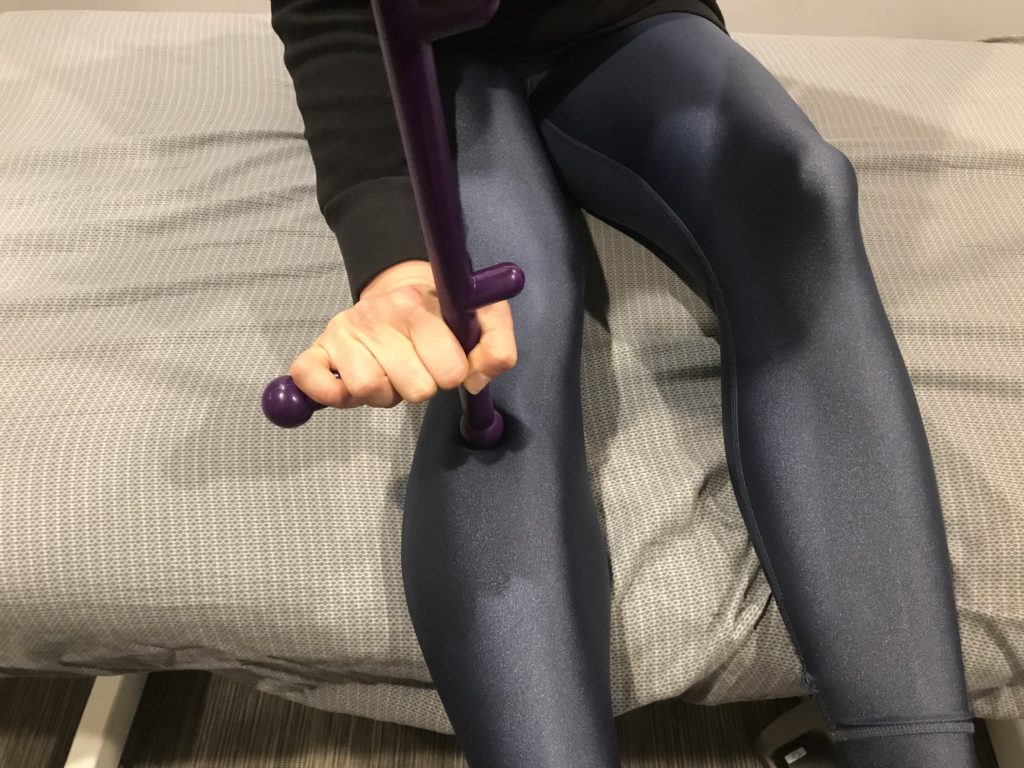
Be sure to work on the muscle fibers right alongside the tibia, because those are the tightest ones.”
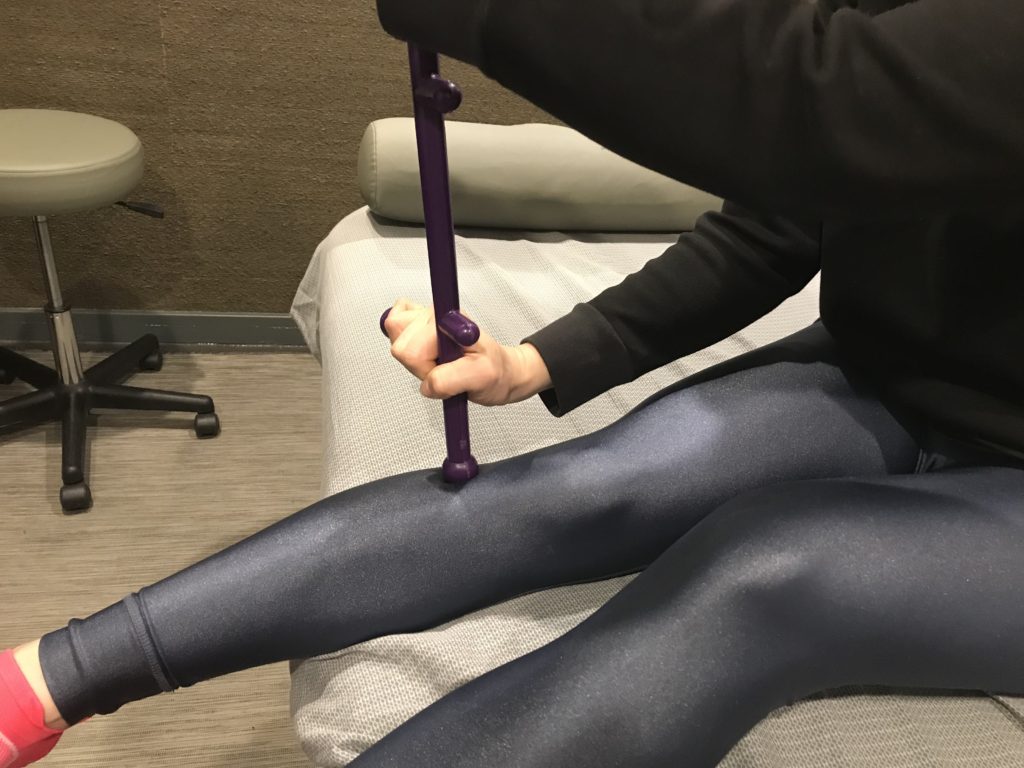
Make sure you’re in the correct position here, too. Owens says to flex your foot and rotate it inwards slightly to stretch the tibialis anterior muscle lengthwise. That way, you get the double benefit of stretching the muscle lengthwise and applying pressure to stretch it even further — two stretches for the pressure of one.
Peroneals
What Delos does
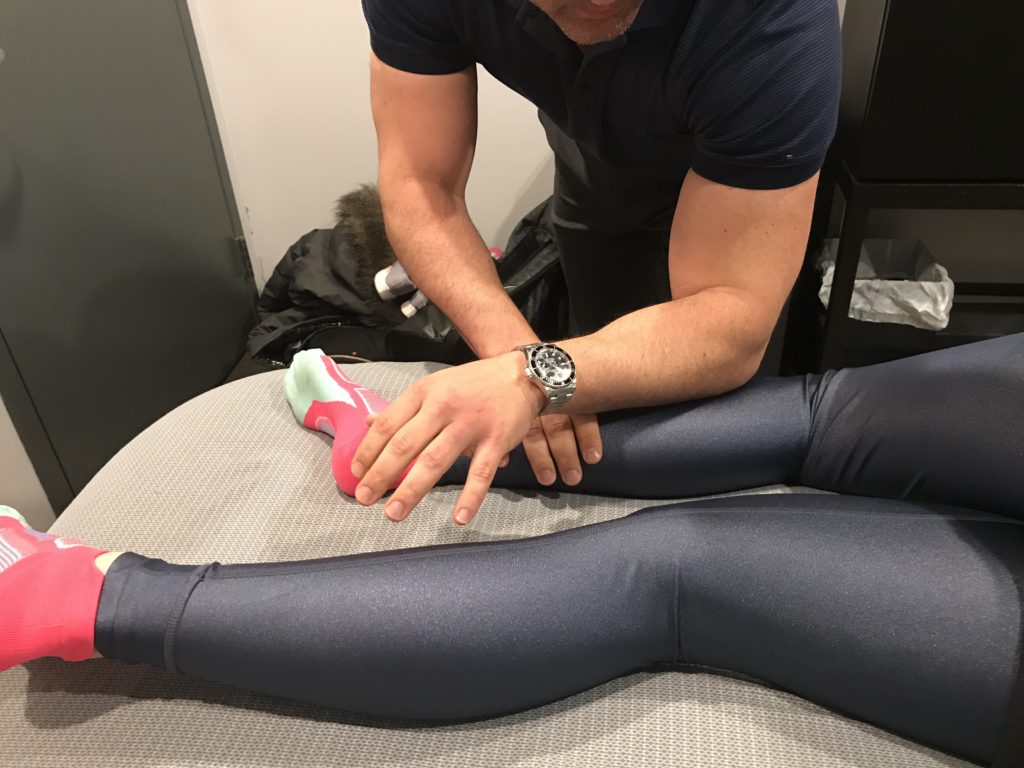
You’ll flip onto your stomach and bring your top leg across the table while your therapist uses his or her forearms and thumbs to add pressure.
What you can do at home
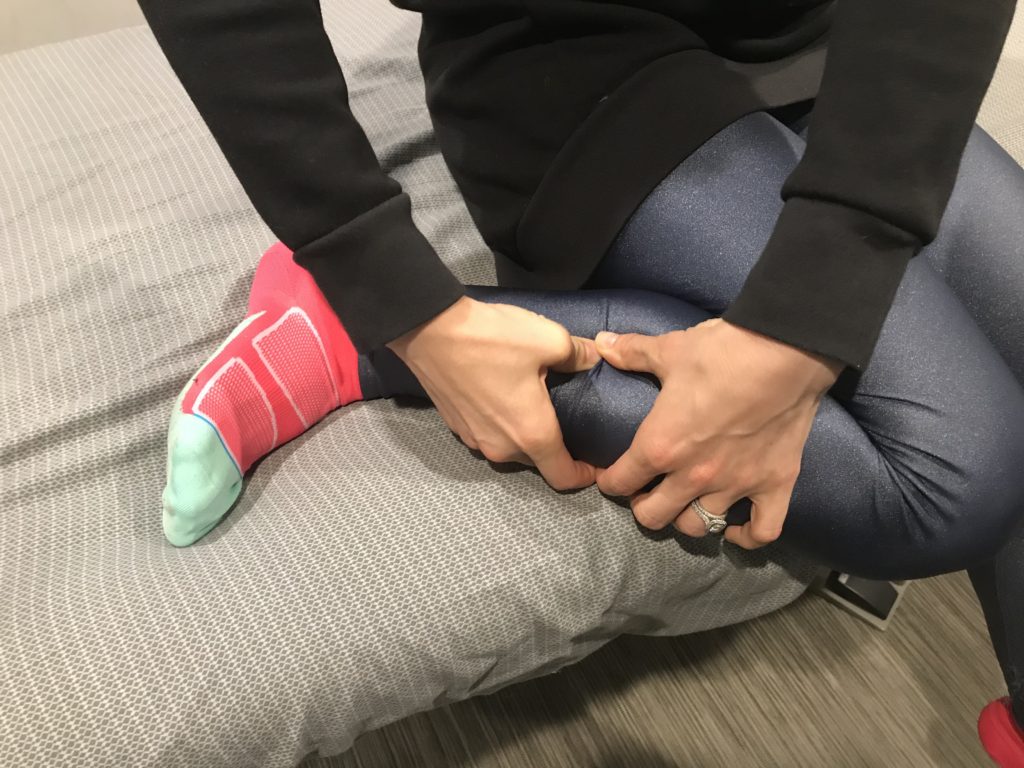
Bend your leg so that your lower leg comes alongside your outer thigh. Using your thumbs (and keeping them together for extra power), apply pressure to the Peroneals – the muscle that feels like it’s between your tibia and your calf.
Questions on how to #DelosYourself or more targeted therapy can be directed to [email protected]. If you’re suffering from knee pain as well, check out our third post in the #DelosYourself series here.












